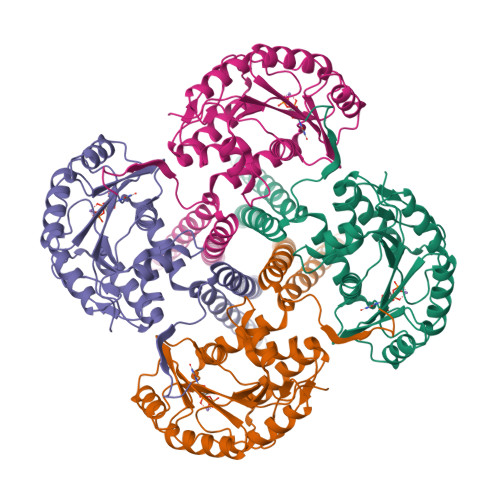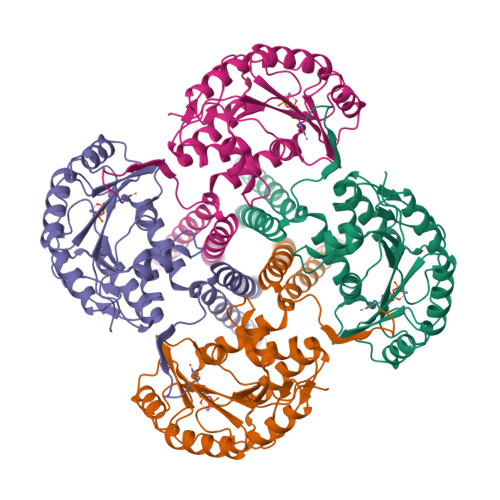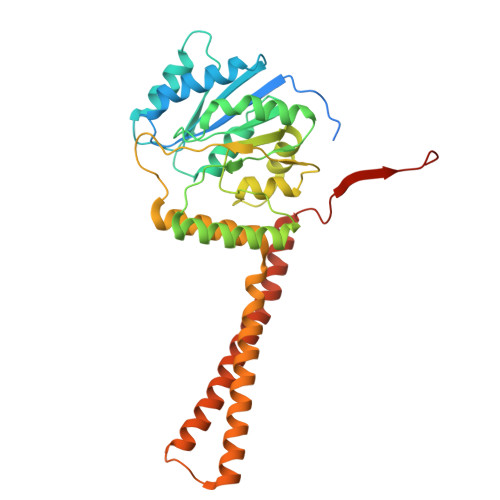Structural basis of undecaprenyl phosphate glycosylation leading to polymyxin resistance in Gram-negative bacteria.
Ashraf, K.U., Bunoro-Batista, M., Ansell, T.B., Punetha, A., Rosario-Garrido, S., Firlar, E., Kaelber, J.T., Stansfeld, P.J., Petrou, V.I.(2025) bioRxiv
- PubMed: 39974898
- DOI: https://doi.org/10.1101/2025.01.29.634835
- Primary Citation of Related Structures:
8VXH, 9ASC, 9B77 - PubMed Abstract:
In Gram-negative bacteria, the enzymatic modification of Lipid A with aminoarabinose (L-Ara4N) leads to resistance against polymyxin antibiotics and cationic antimicrobial peptides. ArnC, an integral membrane glycosyltransferase, attaches a formylated form of aminoarabinose to the lipid undecaprenyl phosphate, enabling its association with the bacterial inner membrane. Here, we present cryo-electron microscopy structures of ArnC from S. enterica in apo and nucleotide-bound conformations. These structures reveal a conformational transition that takes place upon binding of the partial donor substrate. Using coarse-grained and atomistic simulations, we provide insights into substrate coordination before and during catalysis, and we propose a catalytic mechanism that may operate on all similar metal-dependent polyprenyl phosphate glycosyltransferases. The reported structures provide a new target for drug design aiming to combat polymyxin resistance.
Organizational Affiliation:
Department of Microbiology, Biochemistry, and Molecular Genetics, New Jersey Medical School, Rutgers Biomedical Health Sciences, Newark, NJ, 07103, USA.


















